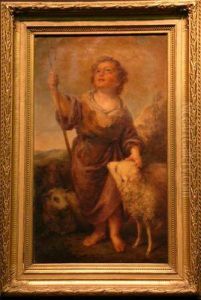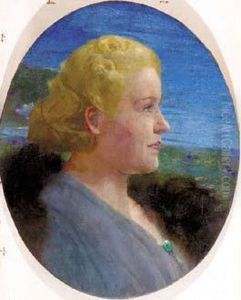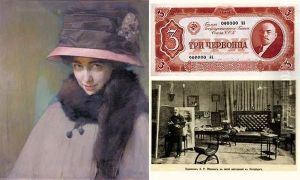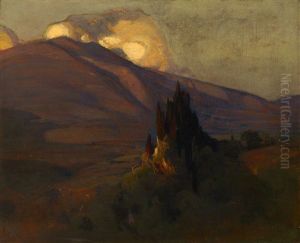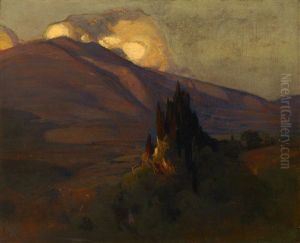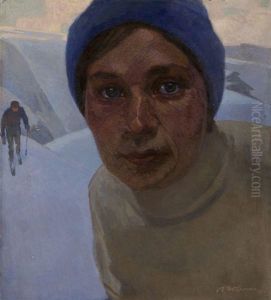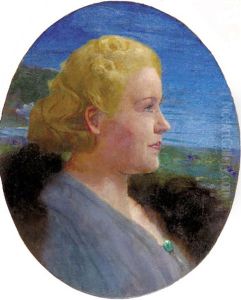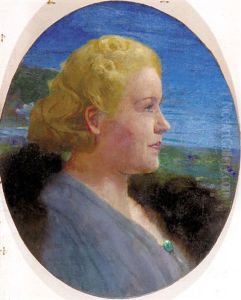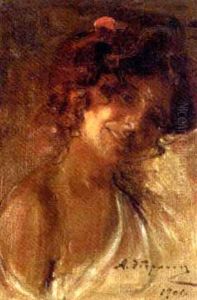Alfred Rudolfovich Eberling Paintings
Alfred Rudolfovich Eberling was a notable Russian portrait painter and graphic artist, born on November 18, 1872, in Saint Petersburg, Russia. His work is often associated with the realistic style of portraiture that was prominent during his time, and he is recognized for his adeptness in capturing the psychological depth and personality of his subjects.
Eberling demonstrated a proclivity for art from a young age, and his talent was nurtured through formal education. He studied at the Imperial Academy of Arts in Saint Petersburg, where he was a pupil of the renowned Russian artists Ilya Repin and Ivan Tvorozhnikov. Repin, in particular, had a significant influence on Eberling's development as an artist, as he was one of the leading figures in Russian fine arts and a member of the Peredvizhniki (Wanderers), a group of realist painters who sought to engage with the social issues of the day through their work.
Upon graduating with honors, Eberling traveled across Europe, which was customary for many artists of that era. This exposure to different artistic styles and schools helped him refine his own technique. Upon his return to Russia, Eberling embarked on a successful career as a portraitist. He gained recognition for his ability to create vivid and expressive portraits that often featured members of the Russian aristocracy, cultural figures, and intellectuals. His portraits are noted for their elegance, sophistication, and detailed representation of fabrics and textures, which lent a certain grandeur to his subjects.
In addition to his portraiture, Eberling was also involved in graphic arts and book illustration. He worked on illustrations for various publications, which showcased his versatility and skill in different mediums. His illustrations often mirrored the realistic style of his portraits, with a strong focus on character and narrative.
The Russian Revolution of 1917 and the subsequent civil war brought about significant changes in the country's cultural landscape. During this period, many artists faced uncertainty, and Eberling was no exception. Nevertheless, he continued to work and adapt to the new socio-political environment. The Soviet era demanded art that was accessible to the masses and that promoted socialist values. While Eberling's style was rooted in the pre-revolutionary tradition, he managed to navigate the changing times.
Alfred Rudolfovich Eberling's contributions to Russian art were substantial. He helped to define the look of an era with his portraits, capturing the essence of personalities that shaped the cultural milieu of late 19th and early 20th century Russia. His work remains an important part of Russian art history, providing insight into the period's aesthetic and social dynamics. Eberling passed away on March 26, 1951, leaving behind a legacy of artistic excellence and a portfolio of work that continues to be admired for its technical prowess and emotional depth.
